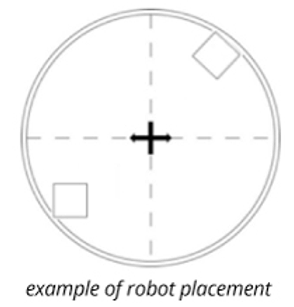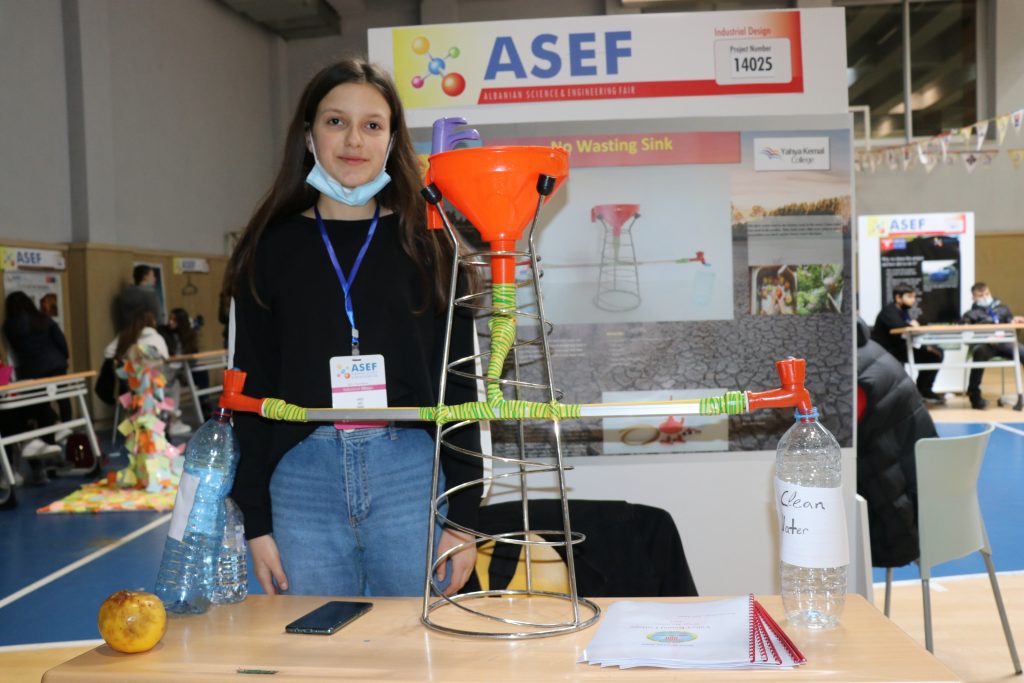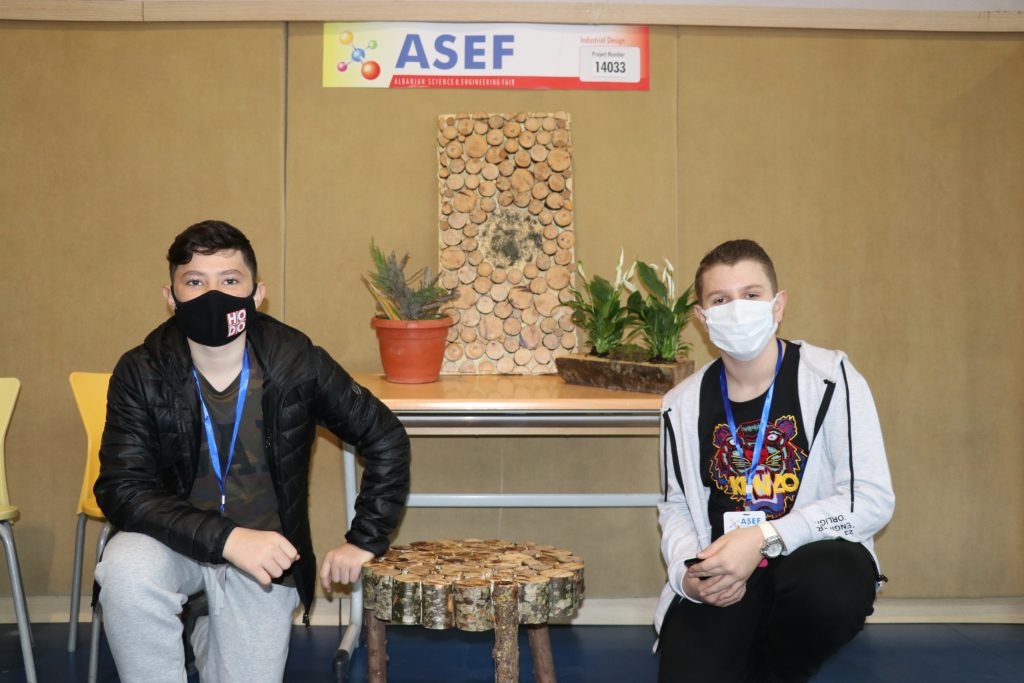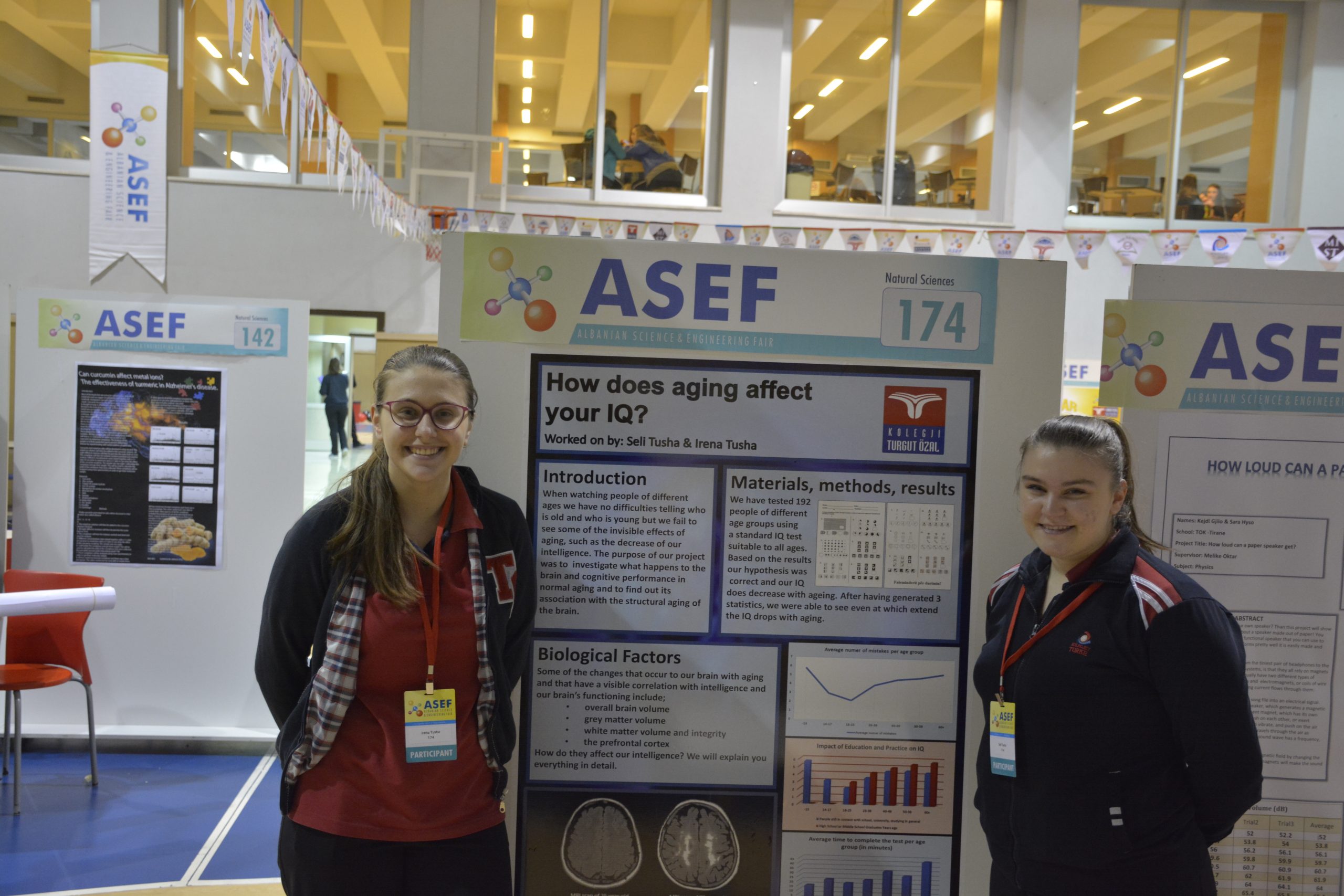ASEF 2025 – Computer Sciences
Web Design
The objective of the Web Design category is to motivate students to spend time in meaningful activities and to be a creator of the digital world instead of a consumer. It aims to unleash students’ creativity and to actualize their imagination. Participants are expected to choose a topic and design their websites according to the given requirements. Design and functionality of a website is crucial.
Rules
- A student may be involved only in one project in the computer sciences (that includes programming, web design, robotics, hardware control and networking) category.
- Projects may be “individual” or “group” projects. A group project may be prepared and presented by a maximum number of two students except Robotics which can be a maximum of three students in a group.
- The project must completely reflect participants’ own work. If possible, the website should be published on a web server and then the link should be specified in the submitted information.
- Written and visual elements used in the web page must be relevant to the subject and must serve the general principles of ethics.
- Students are required to upload their projects as .docx or .pdf file format with their namesurname_projecttitle as filename and with a size less than 100 MB.
- Junior Category: Project Description Paper deadline for upload is February 10th, 2025 Monday.
- Senior Category: Research Paper & Project Description deadline for upload is February 10th, 2025 Monday.
- Poor quality work may cause disqualification.
- Contestants must cover their own expenses for their project materials, stand decorations, brochures, posters, etc.(optional)
- Contestants must avoid any kind of misconduct or fraud such as falsifying data or records, piracy or plagiarism.
- Failure of uploading or poor quality of uploaded documents may result in disqualification.
- The ASEF steering committee reserves the right of amendment of any ASEF rule.
Simulation Programming
This category is for the students who are up to challenges to create a working computer program from top to bottom. Students are expected to create an application such as utility programs, mobile applications for Android or IOS; edutainment and entertainment applications; intranet and internet applications; GNU/Linux, FreeBSD or Apple MacOS X, etc.
Rules
- A student may be involved only in one project in the computer sciences (that includes programming, web design, robotics, hardware control and networking) category.
- Projects may be “individual” or “group” projects. A group project may be prepared and presented by a maximum number of two students except Robotics which can be a maximum of three students in a group.
- The project must completely reflect participants’ own work. If possible, the website should be published on a web server and then the link should be specified in the submitted information.
- Written and visual elements used in the web page must be relevant to the subject and must serve the general principles of ethics.
- Students are required to upload their projects as .docx or .pdf file format with their namesurname_projecttitle as filename and with a size less than 100 MB.
- Junior Category: Project Description Paper deadline for upload is February 10th, 2025 Monday.
- Senior Category: Research Paper & Project Description deadline for upload is February 10th, 2025 Monday.
- Poor quality work may cause disqualification.
- Contestants must cover their own expenses for their project materials, stand decorations, brochures, posters, etc.(optional)
- Contestants must avoid any kind of misconduct or fraud such as falsifying data or records, piracy or plagiarism.
- Failure of uploading or poor quality of uploaded documents may result in disqualification.
- The ASEF steering committee reserves the right of amendment of any ASEF rule.
Game Development and Design
Game Development and Design combines the fields of computer science, physics, art, animation, writing and music together in order to develop an immersive and entertaining experience that engages the player.
Create an original game designed around a puzzle concept.
- The game should be a standalone and executable game
- The game should contain a scoreboard
- The game should contain a leaderboard and celebratory messages
- The game should have a minimum of three levels
- The game should have lives
- The game should have an instructional display
When submitting your game, at least the following will be required:
- A working build of the game. Alternatively, for games released on platforms such as Steam, 4 keys, codes or coupons can be provided instead
- Video showcasing gameplay material of the game
- At least 4 Screenshots of the game
- Basic information of the game (name, short description, number of players etc.)
Rules
- A student may be involved only in one project in the computer sciences (that includes programming, web design, robotics, hardware control and networking) category.
- Projects may be “individual” or “group” projects. A group project may be prepared and presented by a maximum number of two students except Robotics which can be a maximum of three students in a group.
- The project must completely reflect participants’ own work. If possible, the website should be published on a web server and then the link should be specified in the submitted information.
- Written and visual elements used in the web page must be relevant to the subject and must serve the general principles of ethics.
- Students are required to upload their projects as .docx or .pdf file format with their namesurname_projecttitle as filename and with a size less than 100 MB.
- Junior Category: Project Description Paper deadline for upload is February 10th, 2025 Monday.
- Senior Category: Research Paper & Project Description deadline for upload is February 10th, 2025 Monday.
- Poor quality work may cause disqualification.
- Contestants must cover their own expenses for their project materials, stand decorations, brochures, posters, etc.(optional)
- Contestants must avoid any kind of misconduct or fraud such as falsifying data or records, piracy or plagiarism.
- Failure of uploading or poor quality of uploaded documents may result in disqualification.
- The ASEF steering committee reserves the right of amendment of any ASEF rule.
Robotics
Robotics is a student-centered contest which provides students with an understanding of the role of engineering in everyday issues. Robotics encourages students to discover novel solutions to known issues by requiring them to design, build, test and control their unique robots. It helps students to have a lifetime experience and an opportunity to enhance their skills such as being a team member, researching and problem-solving.
Rules
- A student may be involved only in one project in the computer sciences (that includes programming, web design, robotics, hardware control and networking) category.
- Coaches may offer students advice and give guidance prior to ASEF finals, however during the finals, all work required is to be performed by the students.
- Robotics is a team contest. Individual projects are NOT allowed. A team project may be prepared and presented by 2 or 3 students.
- Supervisors may obviously offer students advice and guidance prior to ASEF finals, however, all the required work and performance in the finals has to be done by participants.
- Students are required to upload:
- Junior Category: Project Description Paper, deadline for upload is February 10th, 2025 Monday.
- Senior Category: Research Paper & Project Description, deadline for upload is February 10th, 2025 Monday.
- Robotics projects will be considered as direct finalists if their data are uploaded by the deadline given on general rules.
- Participants must cover their own expenses for their project materials, stand decorations, brochures, posters, etc. (optional)
- Contestants must avoid any kind of misconduct or fraud such as falsifying data or records, piracy or plagiarism.
- The ASEF steering committee reserves the right of amendment of any ASEF rule.
Hardware Control and Networking
The Hardware Control and Networking category encourages students to create software controlling and/or cooperating with an electronic/mechanical device. Students may ensemble the computer pieces together to make it work with a software component that interacts with the hardware. Creativity is as important as mechanical and programming skills in this category.
- Demonstrate expertise in configuring host and network level, technical security controls that include: host firewalls, user access controls, host logging, network filtering, intrusion detection and prevention, and encryption at all levels.
- Demonstrate analytical skills in identifying and troubleshooting networking, security and performance issues.
- Analyze business requirements; research, develop and integrate solutions for enterprise IT requirements.
- Balance business, technical and security requirements and constraints.
- Integrate operating systems, services, network devices and security controls to meet the requirements.
Rules
- A student may be involved only in one project in the computer sciences (that includes programming, web design, robotics, hardware control and networking) category.
- Hardware Control and Networking is a team contest. Individual projects are NOT allowed. A team project may be prepared and presented by 2 students.
- Supervisors may obviously offer students advice and guidance prior to ASEF finals, however, all the required work and performance in the finals has to be done by contestants.
- The project must completely reflect participants’ own work.
- Hardware Control and Networking projects will be considered as direct finalists if their data are uploaded by the deadlines. The projects must be uploaded in .zip or .rar file format with contestants’ FullName as filename and with a size less than 100 MB.
- Students are required to upload their projects as link, .zip or .rar file format with their FullName_projecttitle as filename and with a size less than 100 MB.
- Junior Category: Project Description Paper, deadline for upload is February 10th, 2025 Monday.
- Senior Category: Research Paper & Project Description, deadline for upload is February 10th, 2025 Monday.
- Poor quality work may cause disqualification.
- Contestants must cover their own expenses for their project materials, stand decorations, brochures, posters, etc.
- Contestants are required to bring their own laptops to finals if needed.
- Contestants must avoid any kind of misconduct or fraud such as falsifying data or records, piracy or plagiarism.
- The ASEF steering committee reserves the right of amendment of any ASEF rule.
Lego Sumo
Two self controlled robots compete and try to push their competitor off the field. The field is round and the interior surface is painted black and is bordered with a white margin. In each competition two robots compete. One competition consists of three rounds. If there is a lack of time the matches can be shortened to one round instead of three.
Robot Placement

Upon the judge’s instructions, the two teams approach the ring to place their robots on the ring. A cross in the middle divides the sumo ring into 4 quadrants. Robots always have to be placed in 2 opposing quadrants. The robots have to be placed at the border within the assigned quadrant at the same time when the referee gives the signal to do so and after that the robots may not be moved anymore. The robots have to be placed at the border within the assigned quadrant. The robot has to cover the white border at least partially
The judge will remove the cross after positioning of the robots.
After the two robots have been placed, the referee gives a starting signal. Then the competitors are allowed to push the starting buttons of their robots. This is the last exterior intervention till the end of the game. The robots then have to wait exactly 5 seconds, before they start fighting. An early start counts as a false start and is assessed with a warning or in case of a repetition with a round loss.
The aim of this competition is to find the other robot and push him off the field. A robot is out of the field as soon as he touches the floor outside of the field (height of fall is only a few centimeters). Hardware and competition tactics may not be geared to damage the competitor (“fair play”). If both robots are still in the field after 3 minutes, the game ends with a draw (Time-out).
The base of the robots may not exceed the specified dimensions (see table below) at the start of the game. After the start robots are allowed to “extend” themselves, e.g. extend ramps or wedges or enlarge their base to stabilize. The whole weight of the robot may not exceed the specified weight (see table below).
Lego Sumo Robot Dimensions | Ring Dimensions | ||||
Height | Width | Length | Weight | Diameter | Border |
Unlimited | 20 cm | 20 cm | 2000 g | 77 cm | 2.5 cm |
Any weapons and actuators that could harm the competitor or the audience as well as equipment whose sole purpose is the disturbance of the competitor is strictly forbidden (e.g. pliers, cannons, catapults, chain saws, cut-off wheels, blinding devices, etc.). Equipment which anchors the robot into the ground is forbidden as well (e.g. glue, vacuum suckers, wheel-away rubber stoppers, suckers etc.).
Students are required to upload:
- Junior Category: Project Description Paper, deadline for upload is February 10th, 2025 Monday.
- Senior Category: Research Paper & Project Description, deadline for upload is February 10th, 2025 Monday.
All pieces must be of Lego® brand. Third party pieces may disqualify your robot
Lego Line Follower
The objective of this contest is to complete the course in the shortest period of time while accurately tracking the course line from start to finish.
- Number of Robots per Event: One or two
- Length of Event: 3 minutes maximum
- Robot Weight Range: Any
- Robot Dimensions: maximum 30 cm wide
General Requirements:
- Size and Weight Limits
Dimensional and weight limits for robots shall be strictly enforced. Robots must have passed inspection prior to competing. - Course Time
Time is measured from the start signal until the time it crosses the finish line. A robot is deemed to have crossed the line when the forward most part of the robot contacts or crosses over the line. - Timekeeping
Time shall be measured by an electronic gate system or by a judge with a stopwatch, based on the availability of equipment. In either case the recorded time shall be final. - Autonomous Control
Once a robot has crossed the starting line it must remain fully autonomous, or it will be disqualified. - Arena Edges
A robot that wanders off of the arena surface will be disqualified. A robot shall be deemed to have left the arena when any wheel, leg, or track has moved completely off the arena surface. - Losing the Line
Any robot that loses the line course must reacquire the line at the point where it was lost, or at any earlier (e.g. already traversed) point. - Course Specifications
- The line following course shall traverse a white rectangle.
- The line shall be black, 15 mm wide.
- There shall be a starting area at the beginning of the course and an exit area at the end.
- The line course starts inside the starting area and ends inside the exit area.
- The start and end points of the line course shall be clearly marked via a transverse line.
- There shall be a 10 cm gap in the starting and finishing lines where the line course passes through them.
- Characteristics of the line course:
- There shall be no crossovers (e.g. places where the line crosses itself)
- Switchbacks and hairpins are possible, but the adjacent sections of the line shall be no closer together than 15 cm when measured from the center of each line.
- The closest approach of the line course to the edges of the arena shall be no less than 15 cm, measured from the center of the line.
- The minimal curve radius is 15 cm.
- Sharp angles may occur, but will not be smaller than 90 degrees.
- Power of Officials
The decisions of all officials regarding these rules and the conduct of the event shall be final.
Students are required to upload:
- Junior Category: Project Description Paper, deadline for upload is February 10th, 2025 Monday.
- Senior Category: Research Paper & Project Description, deadline for upload is February 10th, 2025 Monday.
Note: All rules are subject to change without notice.
All pieces must be of Lego® brand. Third party pieces may disqualify your robot
See Also
Category Rules

The Biggest Science & Engineering Fair in Albania
Quick Links
You have any Question?
Contact us
+355 4 22 34 716
RR. PAVARËSIA | AUTOSTRADA TIRANË-DURRËS KM. 1
TIRANË, SHQIPËRI




